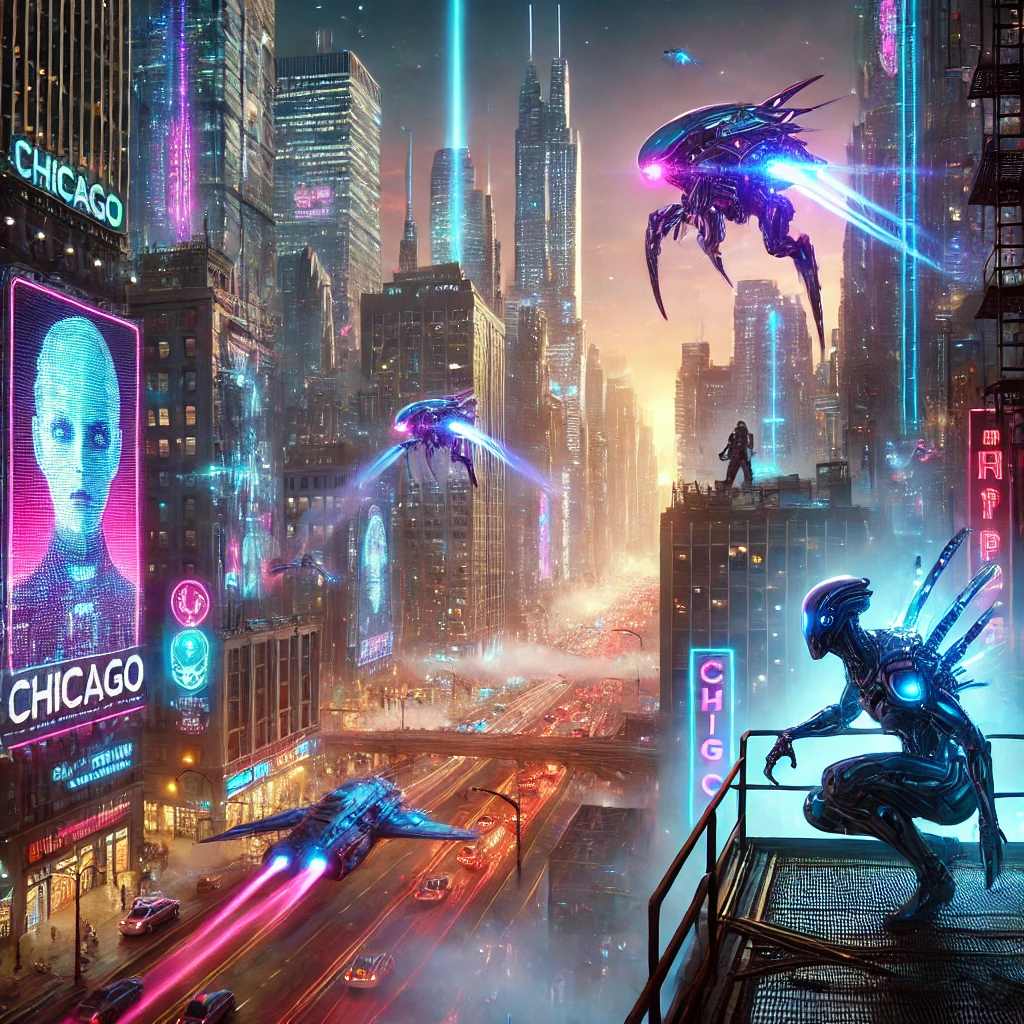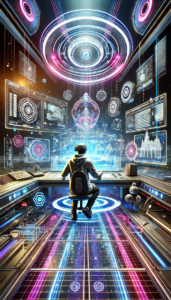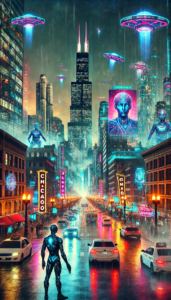
By Webmaster Eric
Imagine waking up to find your creative business derailed overnight — not because of anything you did, but because a social media algorithm changed or a platform decided to ban or throttle your content. If you’re an independent creator, entrepreneur, or professional relying on big tech platforms, this isn’t a nightmare scenario – it’s a daily risk. And it underscores one hard truth: the only path to true creator freedom is owning your digital platform. In this piece, I’ll break down why relying on social media giants is a trap, how creators are taking back control, and why true digital ownership is the future.
Big Tech’s Control Problem
Let’s address the elephant in the room: Big Tech controls far more of your creative destiny than you do. Facebook, Instagram, YouTube, TikTok – these platforms lure creators with promises of reach and audience, only to change the rules at any moment. Algorithms dictate who sees your posts and how often. One tweak can tank your engagement or demonetize your content without warning. In fact, 70% of creators say they feel “screwed” by big tech platforms, yet over 60% still depend on them as their primary outlet. The dependency is real, and it’s dangerous.
Why? Because the house always wins on social media. Platforms are ad businesses first and foremost. They optimize for keeping users scrolling (and advertisers paying), not for fairly rewarding creators . You’re playing on their turf. They own the audience data, they set the terms, and they keep the lion’s share of revenues. Creators chasing TikTok virality or YouTube ad pennies often learn this the hard way. One creator recently shared how 35.9 million impressions on X (Twitter) yielded just $115 in payout – barely enough for a pair of shoes. The platform raked in the ad revenue; the creator got crumbs.
This control problem goes beyond low payouts. It’s about suppression and censorship too. Ever notice how your posts promoting an outside link or a product get mysteriously less reach? Social algorithms often suppress content that doesn’t keep people on their app or that isn’t “boosted” with ad spend. Many creators find their work arbitrarily shadowbanned, buried, or deleted if it doesn’t fit the platform’s current priorities or policies. And if you build an audience that is successful, guess what – the platform may start charging you (or your fans) to reach those followers you thought you “owned.” It’s a classic bait-and-switch.
In short, relying on Big Tech means playing by someone else’s rules. You’re renting your audience, not owning it. As soon as those rules conflict with your interests – your growth, income, or creative vision – you lose. Big Tech’s control over content creators is a ticking time bomb, and countless have been burned when the timer hit zero.
The Illusion of Ownership
Posting daily and accumulating followers can give creators a false sense of security. It’s easy to think, “These are my followers, my content.” But the reality is stark: on social platforms, you own nothing. Your profile, your subscribers, your videos or posts – they ultimately live on someone else’s property. As a result, creators operate under an illusion of ownership that masks a fundamental vulnerability.
Consider this: brands and creators do not own their followers on these platforms. TikTok, Instagram, YouTube – they hold all the data on your audience and can cut off your access to them at any time. If Instagram decides to tweak its feed algorithm or a policy change hits YouTube, suddenly your followers stop seeing your updates. If TikTok gets banned in a major market or just shuts down (remember Vine?), your entire community can vanish overnight. Years of work can be wiped out in a flash, because it was never really under your ownership.
Let’s talk content rights and revenue. The moment you upload to a social platform, you’ve likely signed away an exclusive grip on that content. The platform can repurpose or promote it (they often have broad license rights per their Terms of Service). They monetize your creations with ads and pay you a tiny fraction (if anything). They get rich, you get dependent. It’s a devil’s bargain that too many creators accept as “just how it is.”
The illusion extends to monetization methods like ad-share, brand-sponsored posts, or creator funds. These can be helpful icing, but the platform still owns the bakery. As long as your income relies on a third party’s system, it can be taken away. We’ve seen Instagram throttle organic reach to force businesses into buying ads. We’ve watched YouTube demonetize videos due to policy shifts or advertiser whims, killing income streams overnight. If you’ve ever had a post removed or an account suspended, you know the sinking feeling: you don’t call the shots – Big Tech does.
So ask yourself: Do you really own your creative business if someone else can meddle with it so easily? That rhetorical answer is the wake-up call. Until you control the platform, your “ownership” is just an illusion.
Real Success Stories of Digital Independence
Here’s the good news: creators are breaking free of the trap, and they’re thriving because of it. Real success stories are emerging of individuals who shifted from platform dependency to digital ownership – and never looked back.
Take the case of a landscape photographer who made a bold move: he deleted his social media accounts (including one with a huge following) and focused entirely on his own website and email list. The result? His creative output improved, his stress dropped, and his website traffic actually increased after leaving social media. By removing the algorithmic middleman, he attracted a more genuine audience who sought out his work directly. He now sells prints and courses via his site without fighting an algorithm for attention. No platform can ever throttle his reach again.
Another example: the team behind Morning Brew built a media empire by going directly to their audience’s inboxes. Instead of relying on Facebook or Twitter for distribution, they delivered content via email on their own terms. The outcome was spectacular – they amassed millions of subscribers and now monetize through ads and sponsorships in their newsletter, keeping the majority of the revenue for themselves. No social platform algorithm decides who sees Morning Brew’s content; the subscribers do. This model has since inspired countless writers and podcasters to start their own email newsletters or podcasts, proving you can grow and earn without a traditional platform dictating the rules.
Consider also the world of online video and entertainment. A few years back, the popular comedy brand CollegeHumor saw the writing on the wall with YouTube’s algorithms and ad model. They launched their own subscription streaming service called Dropout. By moving to a membership model on a platform they controlled, they were able to serve their fans content directly. Today, Dropout’s audience engagement (and revenue) eclipses what they had on the old platform – a testament to owning your distribution. They didn’t abandon YouTube entirely (they still use it for free teasers to attract new fans), but the core business now lives off YouTube, where they make the rules. Other video creators have followed suit, launching personal membership sites and reaping far more stable incomes as a result.
For every famous case like Dropout, there are thousands of independent creators quietly winning on their own sites. Fitness coaches who quit Instagram to sell programs on their website and saw their revenues double. Tech bloggers who left Medium, started self-hosted blogs with membership options, and now earn predictable monthly income from loyal subscribers. Musicians who got off the record label treadmill and sell songs or merchandise straight to fans online, keeping 100% of the profit. These stories have a common thread: when creators reclaimed ownership of their content and audience, both their creative freedom and financial reward skyrocketed.
Importantly, these creators didn’t necessarily have millions of followers to begin with. Many succeeded by embracing the principle of 1000 True Fans. You don’t need a viral hit on a massive platform; you need a core community of fans who value your work. When you own your site or membership, every fan can be served deeply and directly. A thousand true fans each supporting you directly (through purchases, subscriptions, etc.) can easily surpass the pennies earned from a million fleeting views on ad-driven platforms. This is how niche creators are building six-figure incomes – by nurturing an audience on their turf, not on Instagram’s or TikTok’s.
Webmaster Eric’s Perspective: Reclaiming Your Power
Let me step in here as Webmaster Eric, someone who’s spent decades in the trenches of the web. I’ve built and managed websites for creators long enough to see patterns. And here’s what I know with absolute certainty: owning your platform is creator power. Period.
In the early days of the internet, everyone from bloggers to businesses understood that having your own website was key. Then social media boomed, and people thought websites were old news. They poured their energy into Facebook pages, YouTube channels, Instagram feeds. Sure, those platforms provided quick hits of traffic and engagement – while things were good. But I also had a front-row seat to what happened when things went bad: algorithm changes, account bans, declining reach, you name it. The creators who weathered those storms were the ones with an independent site and email list as their safety net (or better yet, as their primary channel).
As a webmaster, I’ve helped creators migrate off of rented platforms onto their own piece of internet real estate. I’ve watched artists regain control of their sales by setting up their own online stores, bypassing the hefty fees and restrictions of marketplaces. I’ve seen coaches turn their knowledge into thriving course sites, no longer giving a cut to a big tech gatekeeper. Every time, the story is similar: initially scary, ultimately liberating. When you cut out the middleman, you can finally connect with your audience without interference.
I can’t emphasize this enough: your website is your castle. Social media is just renting a room in someone else’s palace. In your castle, you set the rules. You decide what content to highlight. You decide how to interact with your community. There’s no fear that a landlord might walk in and kick you out, or redecorate and hide your door from visitors. The Webmaster’s perspective is simple – ownership equals freedom. If you truly care about your content, you need to protect it by owning the space where it lives.
This perspective isn’t anti-social media; it’s pro-independence. By all means, use YouTube, TikTok, Instagram for what they’re great at: discovery and awareness. But never put them in charge of your destiny. I tell every creator I coach: funnel your followers from those apps to your own platform as fast as you can. Build that email list. Get them on your site. That’s how you future-proof your career.
When you have your own website, you automatically become more than just a “user” of a platform. You become a true publisher, a business owner, a community leader. You can bypass the gatekeepers because you are the gatekeeper. No arbitrary content policy is going to censor your latest blog post or video on your site. No algorithm is going to decide that only 5% of your followers get to see your announcement. You’re in control. And that confidence radiates into your work – creators free of platform shackles consistently report feeling more creative and empowered, because they’re crafting on their own terms.
Monetization Without Middlemen
Let’s talk money. After all, creator freedom isn’t just about creative control – it’s about financial independence. One of the greatest advantages of true digital ownership is monetization without middlemen. When you own the platform, you decide how to turn your work into revenue, and you keep 100% of the profits.
Contrast this with the platform-dependent model: You rely on ad revenue shares, YouTube taking 45%, or Patreon taking a cut, or Instagram influencing what sponsored deals you get. You’re effectively paying a “platform tax” on your own hard work. But if you shift to monetizing on your own site, that tax goes away. No more sharing revenue just for the privilege of being on someone’s platform.
What does monetization on your own terms look like? It’s a buffet of opportunities:
• Sell Products or Services Directly: Whether it’s digital products like e-books, presets, music, or physical merchandise, your website can be your storefront. You set the prices, you control the branding, and you get paid directly by your customers. There’s no algorithm deciding if your merch post gets seen. If someone’s on your site, they’re there for you.
• Memberships and Subscriptions: Turn your content into a members-only community. Many creators launch membership sections on their sites where fans pay a monthly fee for exclusive access – bonus content, private podcasts, Q&A sessions, etc. Unlike a YouTube membership or Twitch sub, you own the subscriber list and you aren’t splitting revenue with a platform. This is recurring income that no algorithm can take away as long as you deliver value.
• Online Courses and Workshops: If you have expertise, package it into an online course (just like I did with the DIY Website Ownership Course). Courses hosted on your site or a platform you control let you keep the majority of enrollment fees, and you’re building an asset that can sell for years. Many creators find that a single well-crafted course can eclipse years of ad revenue or sponsorships. Plus, you set the curriculum and no one can tell you what you can or can’t teach.
• Direct Sponsorships and Partnerships: With your own platform, you can negotiate sponsorship deals directly and integrate them in a less intrusive way than platform ads. For example, a tech blogger with their own site can work with a software company to sponsor a month of content – paid upfront and without any platform taking a cut or imposing terms. Your audience trusts you, not an impersonal ad network, so these deals can be more authentic and lucrative.
• Affiliate and Referral Programs: This is similar to what some do on YouTube, but with a website or newsletter you again have more control. You can recommend products you genuinely love and get a commission. The difference? The recommendation lives on your site, possibly in an SEO-optimized post that can bring traffic (and income) for years. You’re not at the mercy of a fleeting social feed algorithm.
The common theme here is diversification and control. When you own the platform, you’re not stuck with one brittle revenue stream. You can have multiple flows – maybe some ad revenue, yes, but also direct sales, memberships, etc. If one thing changes (say an advertiser pulls out), you have other income sources not tied to that one partner. Compare that to the creator who only gets paid from, say, the YouTube Partner Program. If YouTube’s rules change or rates drop, they’re out of luck. You, the independent creator, have a whole toolkit of ways to earn that aren’t subject to the whims of a third party.
And here’s another kicker: when you monetize independently, you can often charge what you’re truly worth, not what an ad click is worth. Platforms monetize your content at discount rates (pennies per view). But your fans value your content in a much less stingy way. They’ll pay $10 for a month of your exclusive content, or $50 for a signed print, or $500 for a personal coaching session – whatever matches your niche. Those transactions happen because you’ve built a direct relationship on your platform. You’re not begging an algorithm for exposure; you’re serving an audience that’s already tuned in.
Your First Step to Freedom
By now the picture should be crystal clear. True digital ownership is not just an option – it’s the only reliable path to creator freedom. Big Tech isn’t going to suddenly become benevolent. Algorithms won’t miraculously stop throttling reach. And no one is going to care more about your content and your income than you do. It’s on each of us as creators to seize the means of distribution and monetization.
The question is: Are you ready to break free? Ready to stop building someone else’s empire and start building your own? Every post you make on your own site, every email subscriber you gain, every product you sell directly is a brick in the foundation of your independent creator business. The sooner you lay that foundation, the sooner you escape the hamster wheel of chasing algorithmic approval.
This might feel daunting, especially if you’re not a “tech” person. That’s exactly why I, Webmaster Eric, created the DIY Website Ownership Course – to be the ultimate solution and your step-by-step guide to digital freedom. This course is designed to take you from reliant to self-reliant: from setting up a professional website (no coding needed), to building an email list of true fans, to implementing revenue streams that you control 100%. It’s the culmination of my decades of experience helping creators, packaged into an easy-to-follow roadmap.
Take the first step to reclaiming your power. Enroll in the DIY Website Ownership Course and commit to owning your platform, your content, and your future. By the end, you won’t just have a website – you’ll have a sustainable, independent creative business that no one can put under lock and key. That is the real path to freedom.
It’s time to break the chains of algorithmic dependence and stand on your own digital stage. Your audience is waiting for you – on your website, on your terms. Let’s build that future together. Your freedom as a creator starts now. A broken chain-link fence against a clear blue sky symbolizes breaking free from constraints – just like creators breaking away from platform control.
Exclusive Offer: Free $100k Per Year Roadmap
Ready to take your business to the next level? Fill out my contact form here to receive a free $100k per year roadmap for your niche. This exclusive offer is designed to provide you with a clear, actionable plan to achieve your business goals.
Get the Most Out of Keap
To learn more about how Keap can support your business, check out the perfect customer lifecycle workshop here. This workshop will provide you with valuable insights and strategies to optimize your business operations.
Connect with Me
For more tips and resources on building a personal brand, working from home, starting an online business, and learning online skills, subscribe to my TikTok and IG communities. Follow me on Instagram here and subscribe to my TikTok here.
Additional Resources
I’ve posted hundreds of freebies on my website, webmastereric.com. Check out my DIY Website Ownership course here to learn about domain name ideation, web hosting, web development, and web design.
Invest in Your Future
If you’re interested in securing your financial future, consider investing in Bitcoin, Litecoin, Zcash, Ethereum, or USDC. Start your investment portfolio here.



